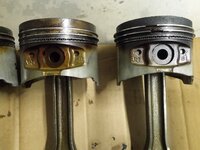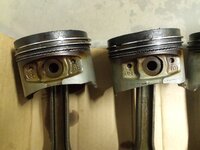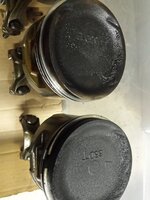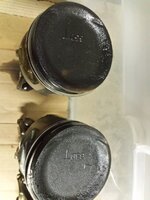Dhan
Supporting Member
- 3,772
- 190
- Apr 29, 2010
-
Denver,
Colorado
My car has had compression test numbers around 130-140 for a few years now. Always figured it was blow-by but the car ran well enough, didn't burn oil, and I never had the means to fix it, so I just lived with it.
I finally got a chance to tear everything down and am looking to reuse the stock 6 bolt pistons and just replace the rings. Also going to replace the rod bearings and the main bearings. I am on a budget, hence the reuse of the stock pistons and borrowing of tools from people, like a bore gauge and micrometer set. Anyway, I have a couple questions about these pistons.

I finally got a chance to tear everything down and am looking to reuse the stock 6 bolt pistons and just replace the rings. Also going to replace the rod bearings and the main bearings. I am on a budget, hence the reuse of the stock pistons and borrowing of tools from people, like a bore gauge and micrometer set. Anyway, I have a couple questions about these pistons.
- The tops of the pistons were all wet with oil, so it definitely was blow-by and therefore worn rings. Is that analysis correct?
- If it was blow-by, why do all the rings look clean and intact? Is this a case of them not seating correctly or the ring gap being wrong, or something else?
- How do I verify these pistons can be reused? I checked through my FSM but it only mentions looking for "scratches and seizures", no piston to cylinder wall clearance measurement numbers or anything. I just really don't want to put in new rings, check ring gap, and for this to happen all over again because these pistons are actually the root of the problem.
- Do these visually look alright to all of you? I've never even held a DSM piston before, so aside from needing a cleaning, they seem fine to me.























